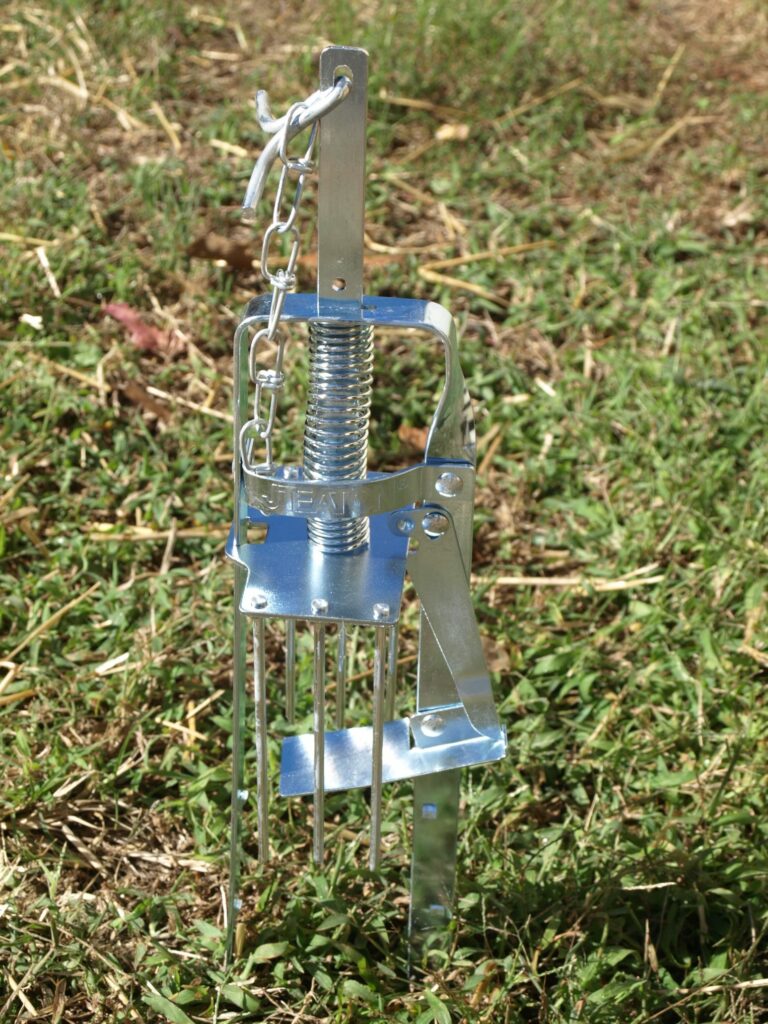Moles in the Lawn
go.ncsu.edu/readext?998695
en Español / em Português
El inglés es el idioma de control de esta página. En la medida en que haya algún conflicto entre la traducción al inglés y la traducción, el inglés prevalece.
Al hacer clic en el enlace de traducción se activa un servicio de traducción gratuito para convertir la página al español. Al igual que con cualquier traducción por Internet, la conversión no es sensible al contexto y puede que no traduzca el texto en su significado original. NC State Extension no garantiza la exactitud del texto traducido. Por favor, tenga en cuenta que algunas aplicaciones y/o servicios pueden no funcionar como se espera cuando se traducen.
Português
Inglês é o idioma de controle desta página. Na medida que haja algum conflito entre o texto original em Inglês e a tradução, o Inglês prevalece.
Ao clicar no link de tradução, um serviço gratuito de tradução será ativado para converter a página para o Português. Como em qualquer tradução pela internet, a conversão não é sensivel ao contexto e pode não ocorrer a tradução para o significado orginal. O serviço de Extensão da Carolina do Norte (NC State Extension) não garante a exatidão do texto traduzido. Por favor, observe que algumas funções ou serviços podem não funcionar como esperado após a tradução.
English
English is the controlling language of this page. To the extent there is any conflict between the English text and the translation, English controls.
Clicking on the translation link activates a free translation service to convert the page to Spanish. As with any Internet translation, the conversion is not context-sensitive and may not translate the text to its original meaning. NC State Extension does not guarantee the accuracy of the translated text. Please note that some applications and/or services may not function as expected when translated.
Collapse ▲ Moles have been a consistent problem this spring as mild winter temperatures have accelerated their activity. Tunneling by moles affects rooting and turf growth, and can lead to scalping of turf during mowing. If your yard is sandy and less compacted, then mole tunneling can be quite destructive.
Moles have been a consistent problem this spring as mild winter temperatures have accelerated their activity. Tunneling by moles affects rooting and turf growth, and can lead to scalping of turf during mowing. If your yard is sandy and less compacted, then mole tunneling can be quite destructive.
Moles primarily feed on worms, insects, grubs, and snails. They typically have little interest in your plants or flowers. However, their tunneling activity disturbs plant roots and exposes them to drying air. Control of moles is a laborious process with no consistently reliable options. Since moles are constantly feeding and moving around, it is difficult to deduce where they will be at any time. Lethal trapping and legal pesticide control products are the only means to reduce the population of moles in your yard. However, this will not prevent other moles from entering the area and resuming activity.
Physical trapping can be successful, but multiple traps are recommended and these traps should be rotated constantly to intercept moles. Look for the most recent tunneling activity and place your traps over these tunnels. Depress the tunnel with your foot, then set the trap in this depression. As moles move through the tunnel and encounter this depression, they will trigger the trap as they attempt to reopen this space.
Poison mole baits are available for use, but you must follow the directions carefully. These products are short-lived but have shown effectiveness in some locations. Mole repellents may also provide temporary reduction in activity but environmental conditions (rain) will ultimately determine how long the product remains effective.
Control of insects or grubs might reduce activity in some locations but rarely provides the level of control most homeowners’ desire. Products like “Milky Spore” may be promoted as an alternative control measure that reduces the white grub population in turf. However, this bacterial product only controls Japanese beetle larvae and takes several months to develop.
For more information on controlling moles in turf, review this NC State Extension Mole note. You may also contact Daniel Simpson at 252-745-412 or Daniel_simpson@ncsu.edu.




